Decided it was time to refine my anchor snubber. For those who don’t know, the snubber is a piece of line that is stretchier than chain, used to take the strain off the chain and the windlass. The chain is let out, then one end of the snubber is either tied or hooked to the chain. The other end is secured on deck to either a cleat or a kingpost. Then the chain is let our further until the snubber is taut and the chain between the hook and the windlass is slack. Now, if the boat gets to hobby-horsing or dancing at anchor, when it comes up to the end of its tether, it stops softly as the nylon snubber stretches some, rather than stopping hard as it would if it came to the end of the un-stretchy chain. Much easier on equipment and nerves and lessens the chance of yanking the anchor out.
Anyway, my old snubber, while serviceable, was getting a little shabby looking. It was made up of two separate lines with thimbled eyes on one end. The thimbles were getting cock-eyed and the lines were different sizes. The arrangement of shackles to get these two eyes connected to one chain hook was a downright embarrassment. Time to straighten things up.
I started by finding a long enough piece of 3/4″ three-strand nylon in the lazarette. I middled it around a rusty, but still serviceable, thimble and then put on a temporary seizing using a doubled constrictor knot.
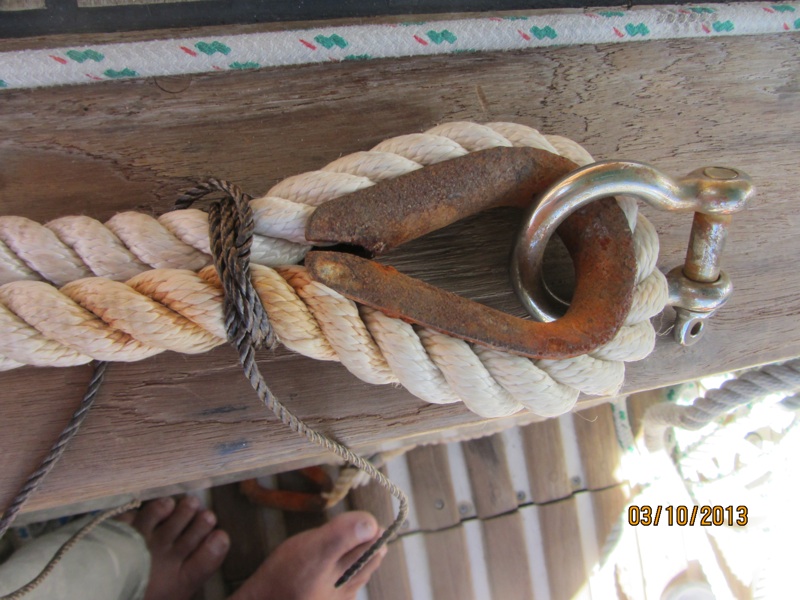
Next, I wrapped the eye using tarred nylon marline and removed the constrictor knot when I got close to the end of the wraps:
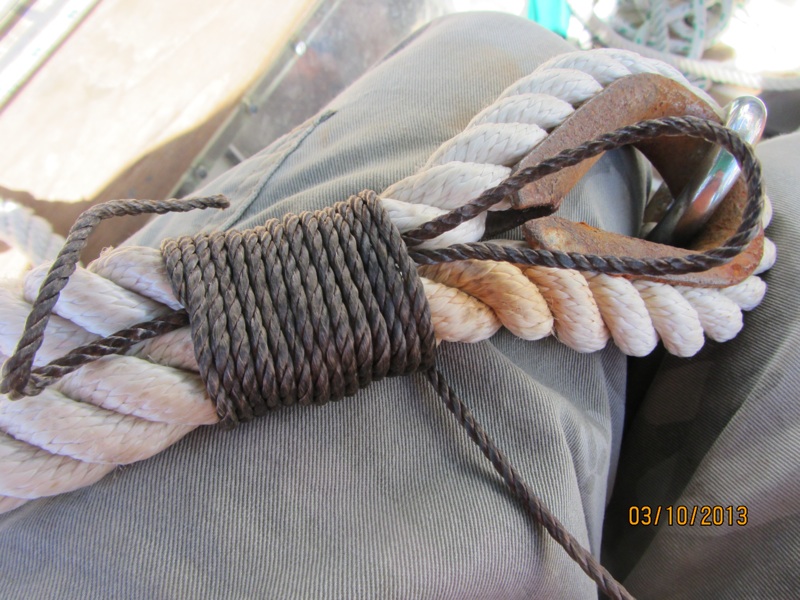
Passed the working end through the eye and pulled the other end to bury the crossover.
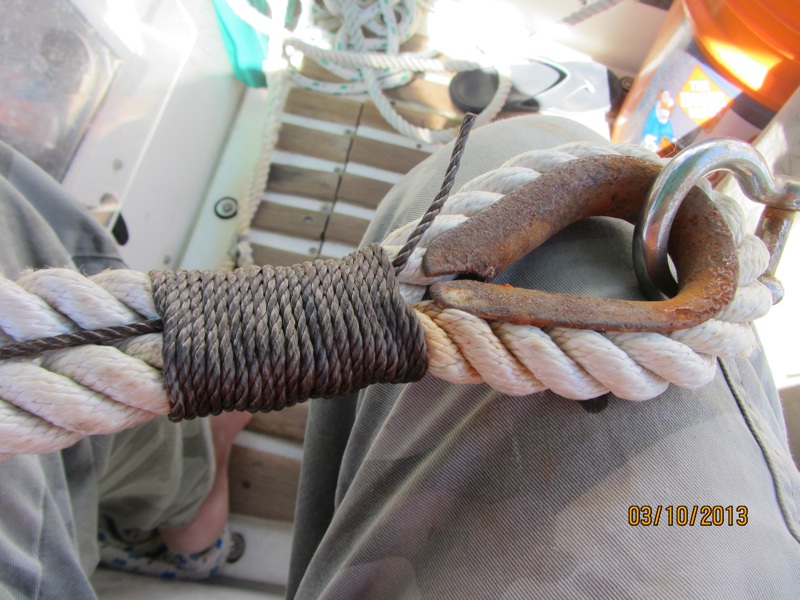
Made a few frapping turns to tighten the wraps and also protect them from chafe:
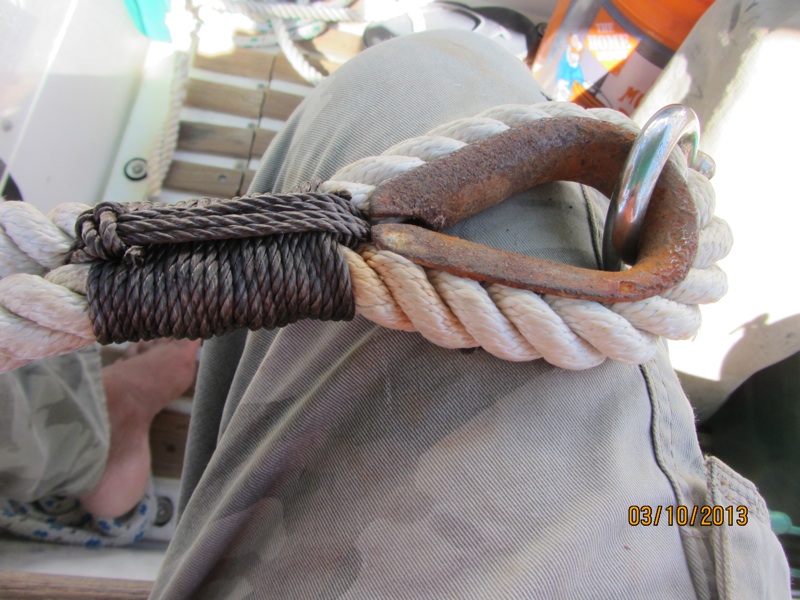
But, for real chafe protection, there’s nothing like old fire hose (Thank you, Silverton Volunteer Fire Department) which I sewed in place using waxed sail thread and also seized in place using a doubled constrictor knot backed up by a surgeon’s knot. Nothing like the belt and suspenders approach for peace of mind.
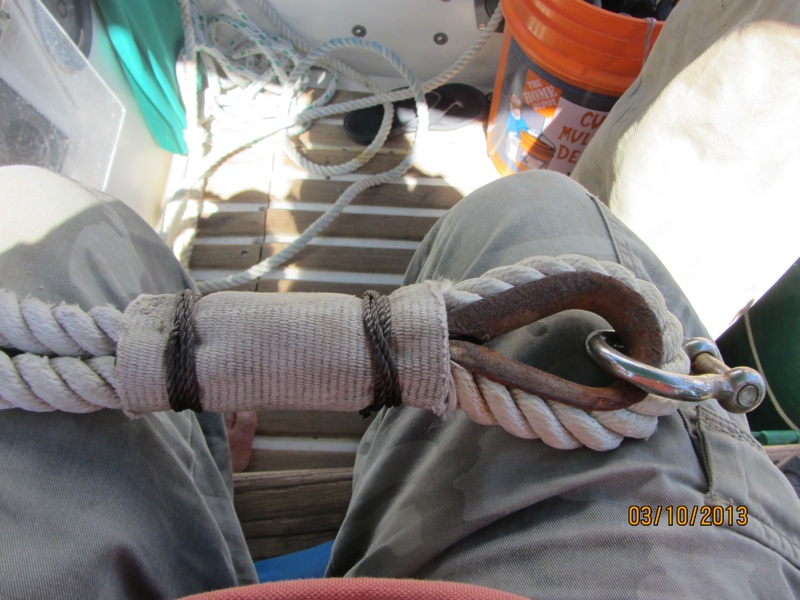
Add some more anti-chafe gear where the line will run through the hawse pipes and we’re good to go.
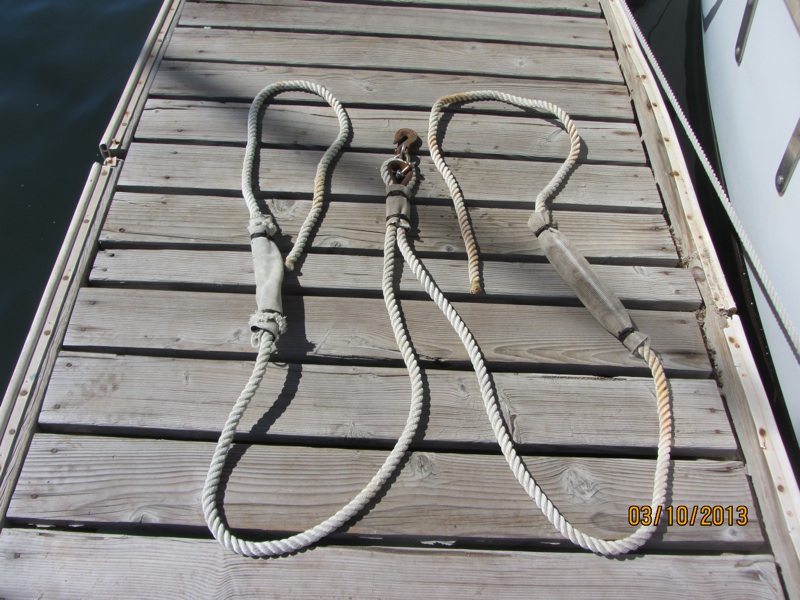
Steve & Lulu... retired. Had enough of the cold wet dreary fall/winter/spring in the Pacific Northwest. Bought a boat, fixed it up, sold our home and sailed to Mexico in November, 2010. Been here ever since except for occasional forays to the States (summer only, thank you) to visit the kids, parents and siblings. If you're looking for a sailing blog, this is the wrong place. This is a traveling, hunkering in, eating blog. Sailing is just how we get from place to place when we can't walk.